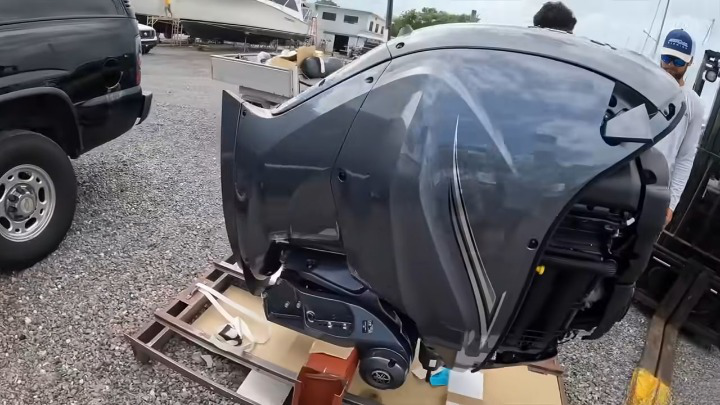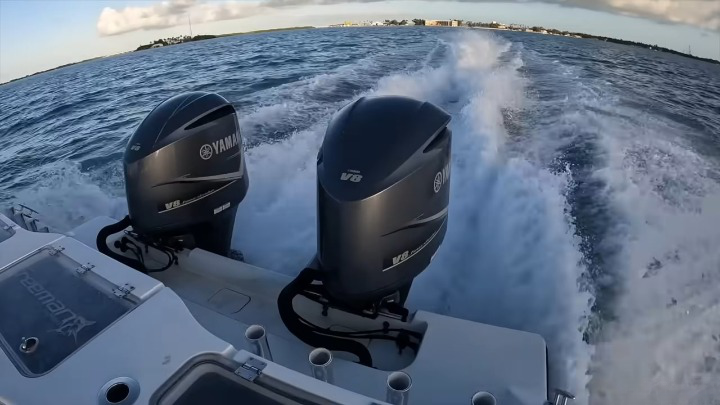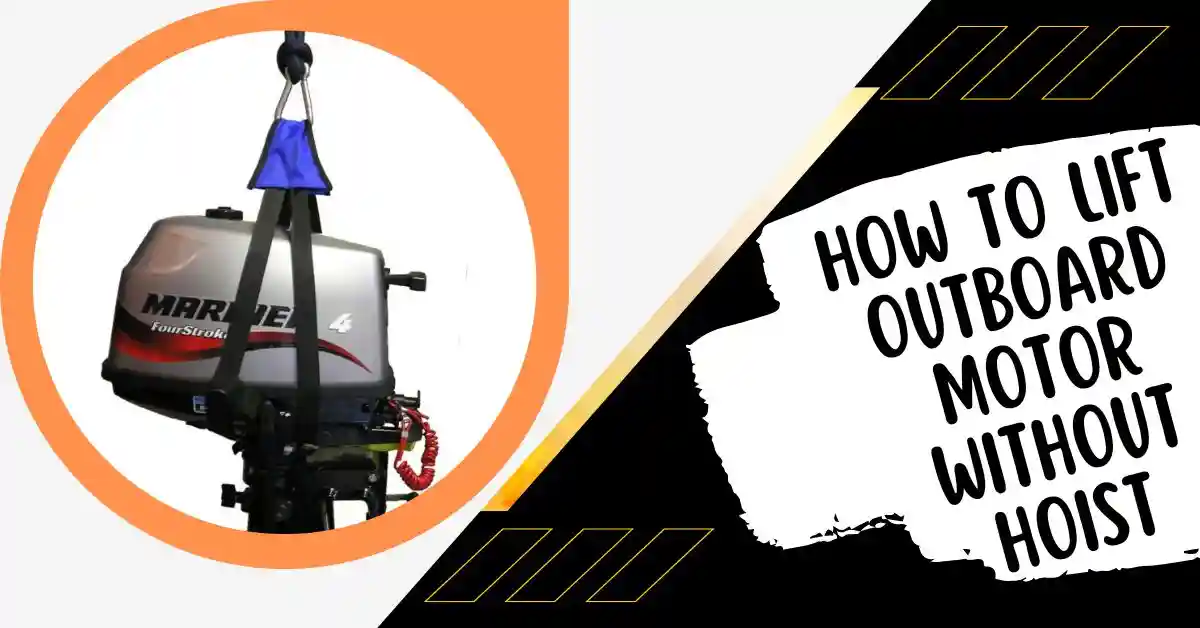Many individuals find themselves having to relocate the outboard engine. When they live on a boat or dock without a lift.
There are several ways to accomplish this. For as stacking some heavy things on one side to produce lifting leverage. Also by utilizing an electric winch and extension cables.
So, how to lift the outboard motor without a hoist?
First, take a propeller shaft out of an engine block. It is usually positioned balanced when raised vertically. Lifting only requires two strong individuals one at each end. Raise the weight gradually and evenly until it is off the ground. The engine can turn freely without leaning to one side or the other.
In this article, we’ll go over how to lift an outboard motor without a hoist.
Table of Contents
ToggleThings Need to be Considered First
It’s crucial to understand how to move an outboard motor without a hoist. Since it may prevent you from needing to purchase a hoist in the near future. Consider all of your alternatives before handling a major piece of manual equipment like an engine.
Regarding a few things, you must take precautions. if you want to transfer an outboard motor without requiring a hoist.
- First, check that the surface you’ll be working on is sturdy and reliable.
- Second, consider the weight of the equipment.
If the engine is excessively heavy, it can tip over and damage itself. It would harm if it fell into a body of water.
Step-by-Step Guide:

Step 1: Tie Chains Around The Motor
The first way to lift the outboard motor without a hoist is to use wedges to prop the motor up.
hen tie chains around both sides of the outboard motor.
Then pull on the chain until it comes off its stand, then lower it down with the chain until you can lay it flat in your vehicle. Make sure that it is tied down.
Step 2: Use Rachet Straps
Ratchet straps are an additional method of lifting your outboard motor without the use of a hoist. Wrap the outboard motors with two ratchet straps. Attach two sides before fastening each side to the matching anchor point in the vehicle.
The outboard engine can then be raised using a winch. Once it has been lifted to the proper height, secure it using ratchet straps.
Step 3: Attach a Block and Tackle Hoist
To lift a larger motor without a hoist, you need to attach a block and tackle the hoist. Attach it to the outboard motor’s sides on both sides. The ropes would then need to be connected to a winch.
When your motor is high enough to fit in your truck or trailer, pull on the winch.
Prior to adding more ropes and ratchet straps, ensure sure it is well fastened. How can you lift a big boat engine? Disconnect the battery position before removing the boat’s motor.
Step 4: Use Wheel Chocks
Wheel chocks can be used to lift your outboard motor without the need for a hoist. The outboard engine must first be laid flat on its side. Only after being secured with tire chocks on both sides.
This will make room for you to roll the motor onto the trailer. On the opposite side of the motor, it installs wheel chocks.
Secure it with ropes and ratchet straps before removing it from the trailer. During this process, your steering wheel may get a bit sloppy. You can adjust it later.
Step 5: Use a Motor Cycle Lift
The outboard engine can be loaded into your vehicle or trailer using a motorcycle lift. It is for the smaller motors.
Without a hoist, this is a simpler method to load an outboard motor. Simply attach it to your trailer and wrap your motor with ratchet straps to employ rise.
The lifter’s handle end would then need to be connected to your motor. After that, hoist it with a winch or a come-along. When it is sufficiently raised, check that the straps are fastened before bringing it back down.
Then use ratchet straps and ropes to safely secure your outboard motor.
Step 6: Use a Crane

Using a crane is the priciest and last option for loading an outboard engine into your car. The ideal method for loading an outboard motor without a hoist is to use necessary tools.
First, confirm that your crane can raise the same amount of weight as your motor can (including the stand). Load the crane into your truck or trailer while it is connected to the outboard engine.
Secure it with ropes and ratchet straps, and drive out.
Few Tips for You!
Here are a few tips and suggestions that you can follow while lifting the outboard motor.
- You must first make notes of the precise spot where the jack should be installed. You need to ensure that it can support the weight of your boat. That is why you should do this.
- To prevent any accidents, be sure to determine the engine’s potential weight while selecting a lifting point.
- Always keep in mind that the jack should be set up at a lower angle. Keep it lower than the height you want the boat to be hoisted to. Doing so increases the likelihood that the boat will tumble or drift off from its place.
- Make sure to start cautiously when lifting for the first time to prevent any casualties. When you feel confident in your lifting abilities, you can lift things more quickly.
- If one person is lifting the boat by themselves, they should only do it if they are physically capable of doing it.
- It can happen that your outboard motor does not start after running. Simply check the battery switch and battery cables.
FAQs

Can You Put Any Outboard Motor On A Board?
Yes! Only your paddle boat may accommodate a trolling motor. However, it must be large enough for this use. You must make sure that your paddle boat is large enough to hold both your weight. The additional weight of your trolling motor along with the batteries. Because there are many sizes of paddle boats.
How Often Should You Start Your Outboard Motor?
It is recommended to start your outboard motor at least once a month, even if you’re not using your boat. This helps to circulate the oil and fuel throughout the engine and prevent corrosion or buildup. Starting the motor regularly also allows you to check for any potential issues or malfunctions before they become bigger problems. It’s important to follow the manufacturer’s instructions for starting and operating your specific outboard motor, as the process may vary depending on the model and size. Be sure to perform routine maintenance and inspections on your motor to keep it in good condition and prolong its lifespan.
How Do You Raise A Boat Transom?
Raising a boat transom can be a complicated process and should only be done by a professional boat mechanic or experienced boat owner. The process involves lifting the boat off its trailer or lifting the stern out of the water using a hoist or crane, removing the old transom, and installing a new, higher transom in its place.
The new transom must be properly secured and reinforced to ensure it can handle the weight and power of the outboard motor.
This process can be expensive and time-consuming and may require modifications to the boat’s wiring, plumbing, and steering components. It’s important to consult with a professional before attempting to raise a boat transom to ensure it is done safely and correctly.
Can You Turn an Outboard Flywheel by Hand?
It is possible to turn an outboard flywheel by hand, but it can be difficult depending on the size and power of the motor. The flywheel is designed to be turned by the force of the engine’s combustion, so it can be quite heavy and have a lot of resistance.
The flywheel may be located in a tight space or difficult to access, making it challenging to turn by hand. If you need to turn the flywheel for maintenance or troubleshooting purposes, it’s recommended to use a flywheel turning tool or follow the manufacturer’s instructions for turning the flywheel safely and effectively.
Conclusion
This is all about how to lift outboard motors without a hoist.
Here is an extra tip for you. Follow these easy instructions to lift an outboard motor without using a hoist. Start by removing the engine’s oil line and battery.
Next, locate a robust item that can serve as a jack stand. Anything you already have should do!
I’ll see you in the following article. A good day to you until then!
I’m Liam Jackson, the proud owner and driving force behind KayakPaddling.net. Born somewhere in the expansive beauty of the United States, I’ve nurtured a lifelong passion for kayaking and fishing that has led me to explore the far corners of our nation’s waterways.
Related Posts:
- Boat Winch Strap Over Or Under? Here Is The Answer to It!
- Heavy Duty Fishing: 11 Best Rods And Reels For Big Fish 2024
- 15 Best Baitcasting Reel Under $100 2024 - Improve…
- 12 Best Truck Bed Hitch Extenders for Kayak 2024 -…
- 17 Best Trolling Reels 2024 - Enjoy your Fishing Adventure
- 12 Best Fishing Lures Ever 2024 - Baits That…












